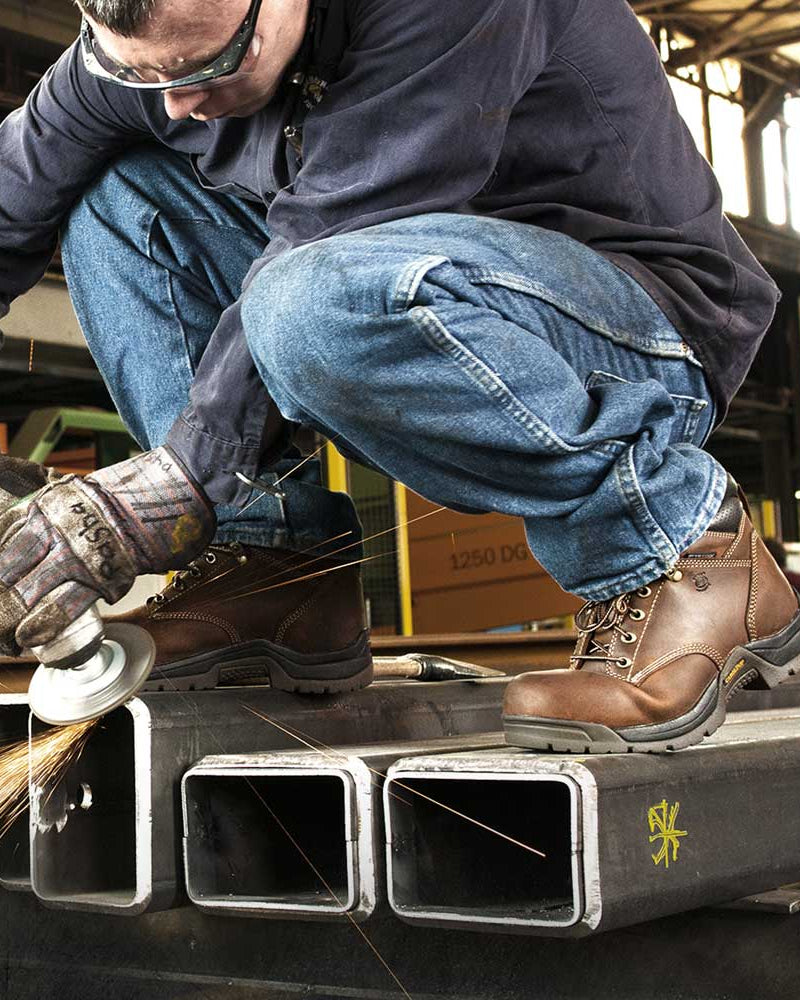
Finding the right pair of shoes seems like it should be as simple as seeing a style you like and buying it in your size. In actuality, not all shoes are created equally. The number of technologies, styles, and specialized designs on the market means some shoes will be a much better fit for you than others.
The best way to ensure a choice you'll be happy with is to not only understand your foot type but know what features to look for in a shoe. Keep the following guidelines in mind the next time you shop for footwear if you're serious about scoring the perfect fit.
1. Understand your pronation type.
Pronation is the official term for the rolling of a person's foot from the heel to the toe as they walk or run. A person with an ideal pronation style (or gait) strikes the ground with the outside of their heel and rolls forward toward the ball of their foot perfectly evenly. However, lots of people roll too much toward the inside of their foot (overpronation) while others roll too much to the outside (underpronation).
You can usually tell which type of gait you have by looking at the part of your shoe soles that shows the most wear. Look for footwear options that help accommodate your unique gait and offer your feet the type of support they need.

2. Figure out your arch height.
A person's gait style often has a lot to do with the height of their arches. If you have flat feet or low arches, the chances are pretty good that you also overpronate when you walk. If your arches are higher than average, you probably underpronate. Arch height can affect how well certain shoe styles work for your feet as well.
You can determine what type of arches you have by examining the prints your bare, wet feet make on a paper bag. People with high arches will notice their foot prints include very thin lines of connection between the heel and the toe. Those with low arches will notice the opposite and should seek shoes that feature ample arch support to help make up the difference.
3. Have your feet measured properly and frequently.
Most people fail to have their feet measured often enough, and they really shouldn't. Your foot size will change based on a variety of factors, including age, injury, pregnancy, and more. If it's been a while since your last measuring session, there's a good chance your shoe size has changed without your realizing.
Proper measuring also means measuring for width in addition to length. If you have a foot that's either wider or narrower than average, it's important that you start selecting your footwear accordingly. You might be surprised at how big a difference it makes in your comfort level.

4. Make a sensible choice for your lifestyle.
At the end of the day, it doesn't matter how great a pair of athletic shoes, casual shoes, or boots looks if it's not practical for your lifestyle. For instance, a pair of heels that might be fine for making an appearance at a cocktail party won't be appropriate for working on your feet all day. A pair of comfort clogs that might suit the average weekend warrior just fine won't make the grade for a professional health care worker, either.
Give some practical thought to what kind of support you need throughout the day and choose accordingly. At best, wearing a pair of shoes that isn't appropriate for your lifestyle is uncomfortable. At worst, it can lead to chronic issues, health concerns, and serious injury.
5. Make an investment in quality.
Price should never be your sole concern when shopping for shoes, especially if you're serious about finding a pair you can really trust. Inexpensively made shoes may cost less up front, but they'll also need to be replaced sooner. They're less likely to include the support your feet need in order to stay healthy as well.
Look for footwear from top brands well known for producing quality products. Prioritize options that feature technology and construction designed to help support your exact type of foot through the type of activity you engage in. Your whole body will thank you for it!








